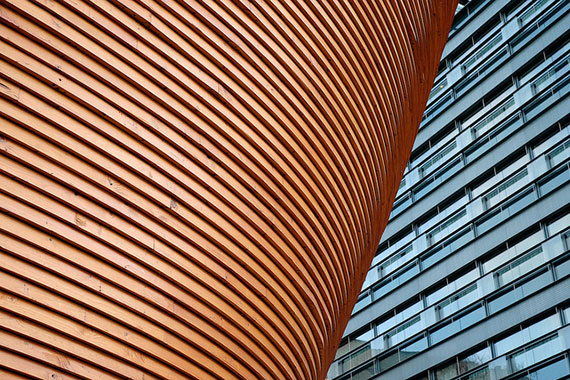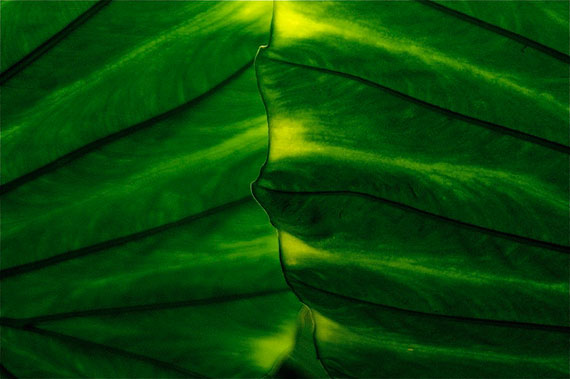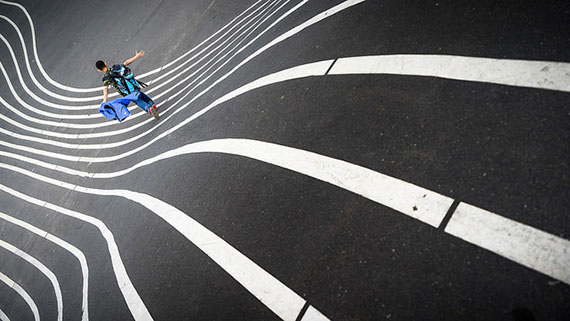Abstract photography can create very impressive photos. However, people tend to perceive abstract images differently than other images. This is because abstract images rely more on form, color, and curves than they do on image detail. On the other hand, most photographers tend to think more about detail when considering photographic subjects. To recognize abstract photography opportunities, one must learn to look at our world differently.

Photo by Alvaro Arenas; ISO 800, f/8.0, 1/125-second exposure.
Definition of Abstract Photography
Abstract photography does not have a commonly accepted definition. Of course, creating a concrete definition of an abstract concept is a bit challenging. Nevertheless, it is necessary to create a definition for this article. That way, some boundaries can be put around the subject. Thus, it will be easier to decide what fits within the subject matter. For this article, the definition of abstract photography is as follows. Abstract photography:
- Does not represent the subject in a literal way
- Communicates primarily through form, color, and curves rather than image detail
Why Shoot Abstract Photography
Of course, the first question that should be asked is why one should take abstract images. That is, why would a photographer focus on capturing abstract images when there are other photographic opportunities out there?
There are two primary reasons. The first reason is that abstract images can really stand out when done well. That is really the most important reason. However, there is another reason. Abstract images can be created just about anywhere a person happens to be. That means that you can create abstract images in your home, backyard, or neighborhood. This saves the time and expense of travel (which is required for many other types of photography).
The Essentials
Abstract photography has three essentials: form, color, and curves. It is important that an abstract photographer think in terms of these essentials.

Photo by Valerie
Form: Form refers to the shape of objects. Form functions as the structure upon which an abstract image is created. Fundamentally, form creates the heart of an image while color and curves add enrichment. Consequently, it is very important that an abstract image begin with good form. This can be accomplished by selecting objects with pleasing, interesting, or dynamic shapes.
Of course, the next question is, “What makes good form?” However, it must be understood that abstract photography is more of an instinctual art form. That is, people react to it emotionally rather than logically. Consequently, form must be treated in a similar manner. Thus, it is necessary to locate objects that create an emotional reaction. When you look at an object and think, “Wow, that is impressive,” you have found a strong form.
Color: Color draws the viewer’s attention. In addition, it stimulates the viewer’s perceptual system. In addition, color serves to hold the viewer’s attention for awhile. When the viewer’s attention does wander, color helps bring the viewer’s attention back.
Using a saturated or intense color is one approach to using color. Another approach is to use colors that contrast.
Curves: Curves can help to spice up an abstract image. That is because curves control the movement of the viewer’s eyes. There are a couple of ways that curves can be used. First, curves can add interest by helping to guide the viewer’s attention to an image’s center of interest. The result is a stronger center of interest and a better image.

Photo by Giuseppe Milo; ISO 100, f/4.0, 1/500-second exposure.
The second way that curves can add interest is somewhat more subtle. In this case, the curves don’t point at the center of interest. Instead, the curves course through the image in an elegant or dynamic way. Despite the fact that the curves do not point toward the center of interest, they nevertheless function to control the viewer’s eyes. With this approach, the viewer’s attention will travel back and forth along the curves. Consequently, the viewer’s attention has been focused on the image.
In Summary
Form, color, and curves provide us with a great start to producing some impressive abstract photos. On the other hand, there is a lot more to explore about abstract photography.
About the Author:
Ron Bigelow (www.ronbigelow.com) has created an extensive resource of articles to help develop photography skills.
Like This Article?
Don't Miss The Next One!
Join over 100,000 photographers of all experience levels who receive our free photography tips and articles to stay current:






Wonderful abstract photography.
Impressive information post that’s really helpful, thanks
Thank you for sharing this valuable information with us. It’s really helpful and informative article.
Whatever without any doubt abstract photography is the amazing creative category of photography. It helps to make an image extraordinary and impressive. It’s different from other images.
Totally believe in this statement : “To recognize abstract photography opportunities, one must learn to look at our world differently.” Sure takes a long time to recognize the potential once you see it.
I think that lighting can assist in this in that it creates Shadows which become shapes and sometimes even lines (thru grids etc).
Perfect , thank you very much
Great images, but they are not pure abstraction. Taking a still photograph of something in front of a camera’s lens does not make it a pure abstract photograph. This style has been done to death starting with Aaron Siskind and others back in the 1920s. A new approach and definition of pure abstraction is wanted. How about Anti-still Photography? Visit tom4art.ca for the real thing, created with a camera and lens. Over 700 works in collections including the Hungarian Museum of Photography.